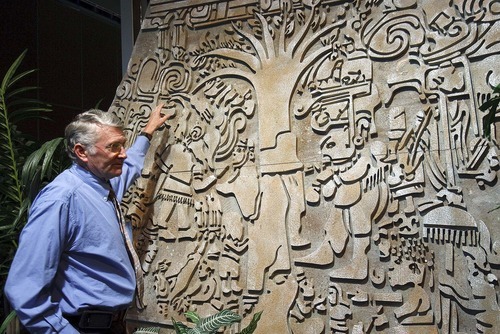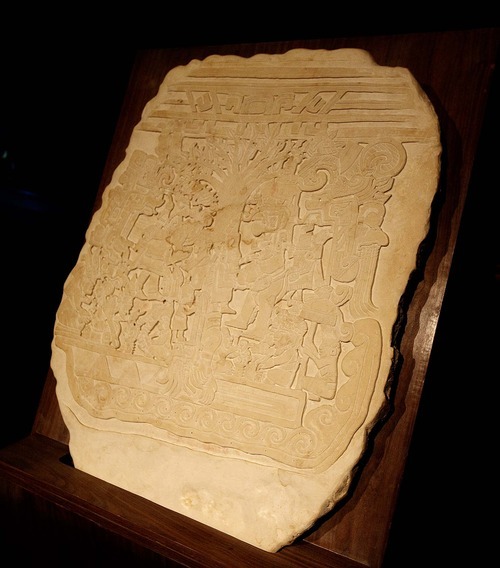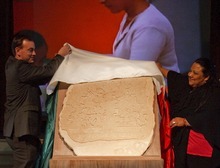This is an archived article that was published on sltrib.com in 2011, and information in the article may be outdated. It is provided only for personal research purposes and may not be reprinted.
West Valley City • Rhosby Barker's LDS faith brought her to Utah from Chiapas, Mexico.
And her faith helped bring a replica of the Izapa Stela 5, which a BYU scholar says is a record of the Book of Mormon "Tree of Life" vision, from Chiapas to West Valley City. The reproduction of the carved stone was unveiled earlier this month at the Utah Cultural Celebration Center.
Barker, director of Casa Chiapas, a West Valley City nonprofit group that teaches English and promotes civic education, said she worked with Chiapas officials to bring the reproduction to the center because of the link between the two cities.
"The majority of people who come to Utah from Chiapas are Mormon," Barker said, adding that most of them have picked West Valley City as their new home.
Izapa Stela 5, a slab of volcanic stone known as the "Tree of Life," is one of a number of carved stones that were found in the 1930s in the Chiapas region along the present-day Guatemalan border.
According to a news release from the center, Stela 5 contains complex imagery that researchers have identified as human figures, animals, botanical and inanimate objects, and deity masks. Different scholars have speculated that the stone records a creation myth, a "fantastic visual myth" and a "quasi-historical scene."
In 1953, professor M. Wells Jakeman, Brigham Young University archaeology chairman, proposed that the bas-relief image was a representation of Lehi's dream of the Tree of Life in the Book of Mormon, the release says. Some LDSresearchers contend that six figures represent Lehi's family at the time of the vision and also have drawn other parallels between the symbols and the Book of Mormon.
Not all scholars, including some who are members of The Church of Jesus Christ of Latter-day Saints, accept that proposition.
The reproduction was given to the Cultural Celebration Center by the state of Chiapas and the Chiapas Institute of Utah. It joins two other replicas already at the center.
At the March 10 unveiling ceremony, West Valley City resident Donald W. Lowe presented to the city a book about his late father, Gareth W. Lowe, who was field director of BYU's New World Archaeological Foundation and directed excavation at the Stela 5 site in the 1960s.
Lowe, who was a teenager at the time, said more than 100 stones were found, most with one to three elements. He said Stela 5 was the most important.
Utah Cultural Celebration Center
P The art gallery at the center, 1355 W. 3100 South, West Valley City, is open 9 a.m. to 6 p.m. Monday through Thursday.









